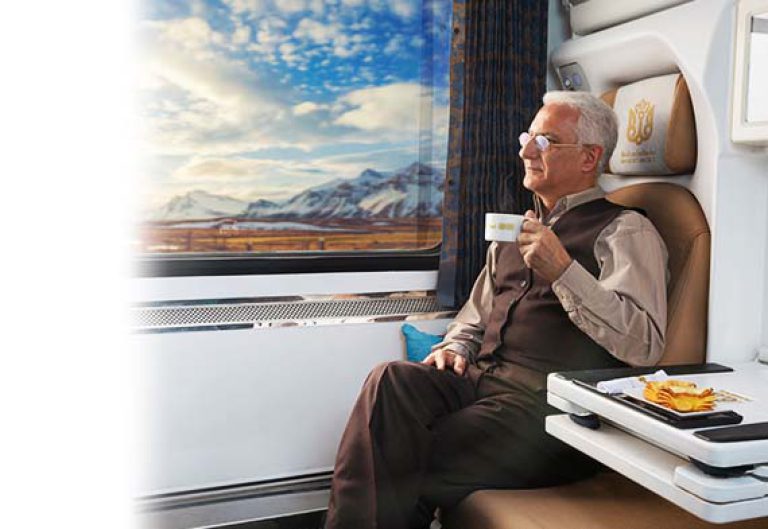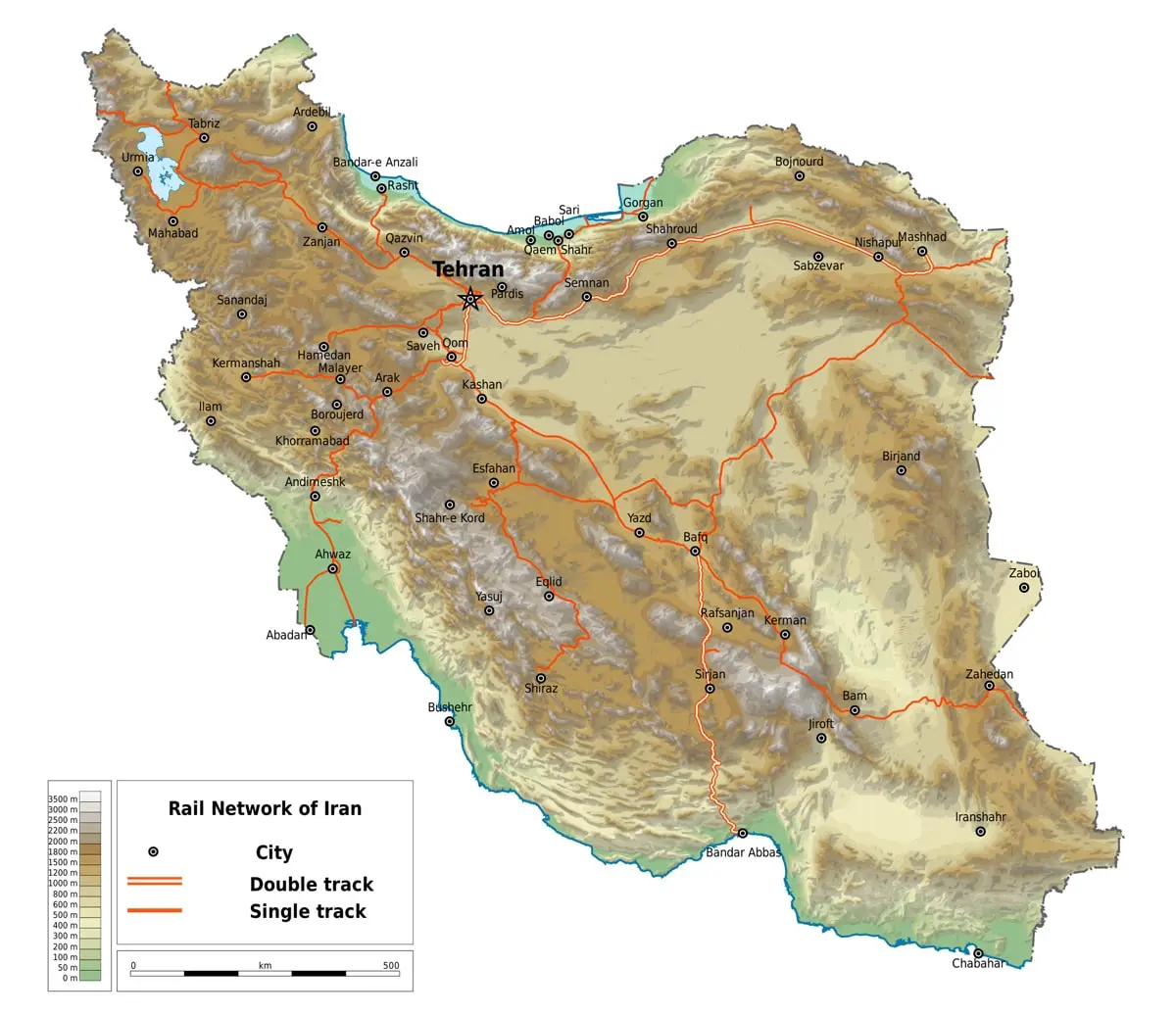Iran Train Tickets – Fast Online Booking
Get Instant Access to Train Timetables, Prices for VIP or Sleeper Services & E-tickets for Your Iran journey
Iran Train Ticket Booking
Travel safely and comfortably with daily trains to and from almost all destinations. There are multiple carriers, classes and amenities on each route.
- Search for your train, and choose your desired date and time.
- Pay online with your credit card.
- Get your ticket instantly.

Why should you book your train tickets with us?
Daily Tickets
Travel all across Iran to major as well as hidden destinations
Flexible Payment
Bank transfer, cash or credit card (available per case)
Ride in Comfort
Spacious cabin with magnificent views of the entire country
24/7 Live Assistance
Avoid delays, rescheduling and ticket changes

TAP Persia Welcome Package
Apply for your visa and choose the welcome package to get a 10 % discount
24/7 Live Assistance
10,000 Euros coverage
IKA to hotel in Tehran
50,000 Rials credit + 10 GB internet
Debit card for payments

Top 10 Things to Know About Iran Railway Ticket Booking
Iran's rails are the most reliable and comfortable way to get to almost any destination if you don't have a tight schedule. They cross deserts in the central and southern regions, high mountain ranges in the north and west, and stretch all the way to the coastline of the Caspian. Here are the top 10 things you need to know about Iran's rails:
- Your ticket will be checked once upon boarding and another time at random throughout the journey.
- The difference in price between tickets comes from amenities, meals and service class.
- There are Women's Only wagons for those who wish for more privacy.
- If you want a private compartment, you have to purchase all 4-6 seats within that compartment.
- Iran's railway covers over 10,000 Km of tracks across the country with multiple stops on the way to each destination.
- There are daily trains to and from Tehran, Mashhad, Bandar Abbas, Shiraz, Isfahan, Kerman, Ahwaz, Yazd, and almost all cities.
- Trains have far fewer delays or cancellations due to weather, road conditions, etc.
- Most trains will have an onboard restaurant for meals, snacks and refreshments.
- You must check in at the station at least 1 hour before your departure time.
- Attendants and passengers are always hospitable and helpful so ask people if you need help. Use google translate for fastest results.
Train Ticket Prices in Iran
Ticket prices can vary by class, season and availability. In order to get the most accurate prices, start a chat with us. The numbers below represent average prices and amenities offered.
Bus trains
- Seating like a bus
- No private compartments
- Faster than other trains
- More available and most frequently taken
Economy trains
- 4 to 6 beds per compartment
- Adjustable lighting
- Adjustable temperature
First class
- All amenities in economy class
- 4 beds per compartment
- Meals included
- More options in compartment
- Entertainment system with movies, music and books
- Minimum vibration and noise of carriage
Iran Train Ticket Details
Amenities
Amenities will differ greatly based on class and ticket type. Compartments may include the following amenities:
- Restaurant with service throughout ride
- Wagon restrooms (Sitdown + Squat WC)
- Wi-Fi for purchase throughout the ride
- Entertainment system (Movies + Music)
- Charging sockets
- Adjustable lighting
- Adjustable temperature
- Child protector on bed
- Noise & vibration absorbers
Baggage Allowance
All tickets come with a 30-50 Kg per person allowance
- You are allowed two pieces of luggage totalling 30-50 Kg per person depending on your ticket type
- If your luggage is more than 70 cm × 70 cm and weighs more than 30 Kg, it should be delivered to the cargo counter.
- Additional luggage will carry additional cost (about 50-100K tomans per large bag)
- Bicycles and cars can be transported at an additional cost and must be coordinated in advance.
- The weight of the package delivered to the cargo can not exceed 200 kg and dimensions of 2 meters.
Number of Beds
Most trains come with beds so you can relax and rest throughout your ride
- 8-12 compartments per wagon
- 4-6 beds per compartment
- All beds comes with fresh pillows, blankets and sheets
- Bus trains do not have beds
- If you wish to have a private compartment, you must purchase all the seats within your compartment
Meals
Almost all trains will have onboard restaurants and refreshment stations available throughout the ride
- Meals are included in most economy and almost first class tickets
- 5 star trains like Fadak have specialized catering services
How the Iranian Railway Saved World War II
Ride on a piece of history. The Trans-Iranian Railway, a UNESCO World Heritage Site, was the site of a key turning point in World War II. The allied forces used this extremely important geographic route, known as the “Persian Corridor”, to help win the war. Most of the routes that were originally built almost a hundred years ago are still in use today. You can experience a piece of this pivotal moment in history and ride on Iran’s extensive network of rails.
The railway connects the Caspian Sea in the north with the Persian Gulf in the south, crossing two mountain ranges, the Alborz and the Zagros, as well as forests, plains, highlands, rivers and 4 distinct climate zones.
Construction of the railway took place from 1927 to 1938, executed by the Iranian government and completed in record time by 43 international contractors. The project was unique in that it was almost entirely funded through domestic capital to avoid foreign investment and control.
Iran Railway Map

Top 20 Popular Train Routes in Iran
The country has over 400 rail stations you can visit. In fact, many of the Iran UNESCO World Heritage sites can be visited via railway. Here are the 20 most-visited destinations in the country in alphabetical order:
- Ahvaz
- Arak
- Bandar Abbas
- Gorgan
- Hamedan
- Karaj
- Kermanshah
- Malayer
- Maraghe
- Mashhad
- Nishapur
- Rasht
- Sari
- Shiraz
- Susa
- Tabriz
- Tehran
- Urmia
- Yazd
- Zanjan